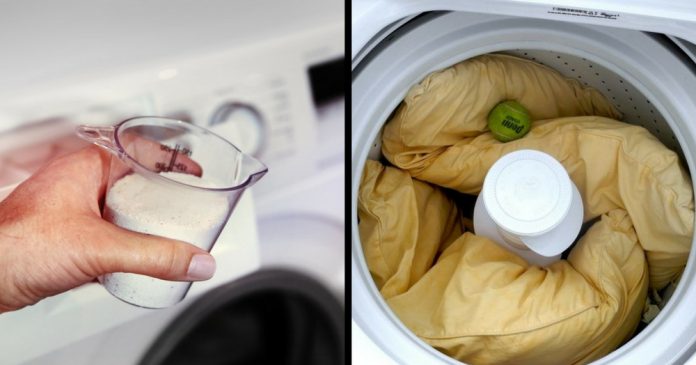The last thing you want is a dirty, smelly pillow to crash on after a long day’s work. If it’s been more than six months since you last washed them, it’s high time to give your pillows a refreshing cleanse. Carolyn Forte, director of the Good Housekeeping Institute Cleaning Lab, is here with expert advice on the proper way to clean your pillows. Let’s dive in.

Cleaning Down and Fiberfill Pillows: To extend the lifespan of your pillows, consider using a washing machine without an agitator, that large rotating wheel often found in the center of machines. If an agitator machine is your only option, no worries. Simply place the pillows vertically inside the machine to prevent them from getting caught in the wheel and potentially getting damaged.
Most of the washing instructions you need can be found on the label of your pillow. However, if you’ve removed that label long ago (as many of us do), use warm water and select the gentle cycle. Afterward, opt for a cold water rinse and spin cycle. When drying, use low heat and remember to flip the pillows regularly to ensure even drying.

Cleaning Foam Pillows: Foam pillows cannot be machine-washed, so a different approach is necessary. Use a vacuum cleaner with a cushioning tool attachment to remove dust and debris. Opt for lower suction levels to prevent damage.
Another method is to place the pillows in the dryer and set it to no heat or air-only mode for approximately 20 minutes. For spot cleaning, use a cloth dipped in a mild soap solution. Rinse with a damp cloth and allow it to dry thoroughly. Please note that foam is delicate, so if hand washing is required, carefully follow the provided instructions and handle the pillow with care.
Cleaning Feather Pillows: Feather-filled pillows require special care to avoid damaging the delicate feathers. It’s recommended to wash two pillows at a time to maintain balance. Add a small amount of detergent and choose the delicate rinse cycle. Rinse once more for thorough cleaning.
To restore fluffiness during drying, consider adding clean tennis balls to the mix. If you notice any clumping, gently remove and fluff the affected areas by hand. Since pillows take longer to dry than typical laundry, if dampness persists after machine drying, place them outdoors under the sun for complete drying.
Cleaning Down and Fiberfill Pillows: To extend the lifespan of your pillows, consider using a washing machine without an agitator, that large rotating wheel often found in the center of machines. If an agitator machine is your only option, no worries. Simply place the pillows vertically inside the machine to prevent them from getting caught in the wheel and potentially getting damaged.
Most of the washing instructions you need can be found on the label of your pillow. However, if you’ve removed that label long ago (as many of us do), use warm water and select the gentle cycle. Afterward, opt for a cold water rinse and spin cycle. When drying, use low heat and remember to flip the pillows regularly to ensure even drying.
Determining When to Replace Pillows:
Ideally, pillows should be washed approximately once a month to maintain cleanliness. However, even with regular cleaning, there comes a time when you must bid farewell to your trusty pillows. How can you tell when it’s time for a replacement? A simple test involves attempting to fold the pillow in half. If it springs back to its original shape, you’re good for a while. If not, it’s a clear sign that it’s time to invest in a new one.
SOURCE : good house keeping / Professor’s House / Secret Linen Store










